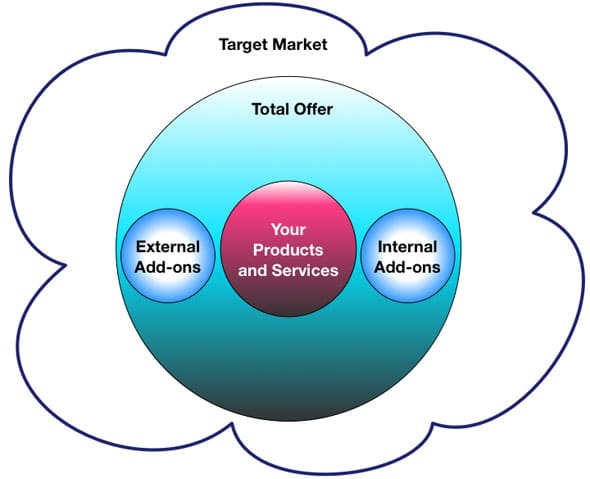You don’t need a business plan to start a business, but if you want to be more systematic, more productive, and more effective entrepreneur who will know what will need to be done with many strategic options you will need a business plan. You can start building your own basic business plan template with the information provided in this series of posts.
Yes, a business plan is the definition of your entrepreneurial journey. What will you need to do? Do you know what options you have? What directions will you choose in the development of your small business? Who will help you? These questions and many more questions will be answered through your business plan.
In this first part of the series about building your basic business plan template, I will start to guide you through the business planning process. Yes, I will talk about the business planning process, not about the business plan as a document, although at the end of these series of the blog posts I will share with you the template, as the basic business plan template you can use in your own business planning process.
Let’s start with the elements that your business plan will need to have.
Basic Business Plan Template Section #1: Company Profile
Your basic business plan template will start with the profile of the company that you want to build or simply the company that you already have built, but you need a simple, or a basic business plan in order to plan the future of the company.
Here are several things that you will need to think as a first and then write in this first heading of your basic business plan template.
1.1 Your Total Offer
Write something about your offer, or what your company will offer on the market. Do not limit yourself only to your products and services, but think more about outside the traditional box. I am talking about the total offer that contains your initial offer with your products and services and additional add-ons from inside and outside your company.
Inside add-ons can be everything that comes from your own company as associated products or services, logistics, guarantee, warranty, bonuses, pricing, customer support, delivery, availability…
Outside add-ons can be products and services that are related to your products and services and can improve the overall satisfaction of your customers, but they are provided from other people’s or businesses outside your company as partners. Explain your offer with all these elements in no more than two to three sentences.

1.2 Differentiation
In this subheading, you will need to answer one of the most important questions for your success: Why your customers will choose your business over everyone else on the market? Simply in several bullet points that will be no more than one page, list all factors of differentiation that will make your company be different from the competitors.
1.3 Legal Forms
Now, in this subheading of your basic business plan template, you will need to choose the right or the most appropriate legal form for your small business. What legal form you will choose? Is it the sole proprietorship, or partnership, or corporation, or limited liability company? Chose what is the most suitable for you and explain why in one to two sentences.

[click_to_tweet tweet=”The business plan is the definition of your entrepreneurial journey.” quote=”The business plan is the definition of your entrepreneurial journey.”]
1.4 Ownership
Who are or who will be the owners of your company? In this part of your basic business plan template, you will need to make several bullet points where you will describe the owners of the company. The owners can be you, your partners or investors. Simply write the name of the owner and percent of his ownership for the business.
1.5 Location
As the last thing in the first heading of your basic business plan template, you will need to describe the location where your business will operate. If you have more than one location, simply make bullet points and describe the specific location, the function of the location and short description why it is the best possible solution for your company.
Basic Business Plan Template Section #2: Products and/or Services
The second heading in this basic business plan template is the heading where you will describe the products and services that your company offer, or will offer on the market to the target customers.
Here you will need to make several bullet points, or more precisely you will have as many bullet points as you have products or services. At each bullet point write the name of your product and/or service, and then start describing your product and services. When you describe them think about the following question that your description will need to answer:
- What are the benefits of the specific product or service?
- What are the features of your product or service?
- How and when your product or service will be used?
- How it will be made, or produced?
- What technology will you use to produce your product or service?
When you finish with listing and describing your products and services you can add the additional list in the same way as your current products and services, but the list will be for future products and services that you plan to introduce in the future.
Basic Business Plan Template Section #3: The Market
The third heading in your basic business plan template will focus on the market. Here, you will need to cover three different subheadings:
3.1. Customers
The first market element that you will need to describe in this part of your basic business plan template is your target or ideal customers. Who your targeted customers are? Where are they? What types of problems, desires and need they have? What are their demographic and psychographic characteristics? How much are they? How much of them you plan to become your customers, or how much of them you will serve? As a first, make bullet points for each customer segment. Then, describe your targeted customers while answer the questions I have mentioned above.
3.2. Competitors
The next are competitors. Here, you will need to list the five biggest competitors for your small business. After you list them, write a brief description of all of them. To complete this part of your basic business plan template, you will need to analyze your competitors. In a table with three columns you can put something like this:
- Competitor. In this first column in your competitive analysis table as a part of your basic business plan template you will need to write the name, location, and website of your competitor.
- Description of the competitor. What is the value that your competitor offers their customers? How much money do they charge for their products and services? How they market their products and services? Simply answer these questions and it will be enough to gain intelligence about your competitors.
- Differentiations. In this column, you can simply write what will differentiate your company from the specific competitors, or what you will need to do if you want to differentiate your company from them.
3.3. Your Value
As a last subheading from the market heading of your basic business plan template is the value that you will ship to your customers. Here, in the simplest form, you will need to describe your unique selling proposition.
Basic Business Plan Template Section #4: SWOT Analysis
One important analysis you will need to include in the basic business plan template is SWOT Analysis. It is a tool for strategic planning that will give you many possible directions to improve yourself and your company. Also, you will utilize your strengths and external opportunities.
The end results from this heading in your basic business plan template are to have a list of possible strategies for your company.
You can simply start with bullet points where you will list all of:
- Internal strengths
- Internal weaknesses
- External opportunities
- External threats
I have developed 16 questions for external environment and 16 questions for internal environment. These questions will lead you through this process of SWOT analysis. You can read and use them in the post titled as „SWOT Analysis – 4 Steps.”
When you have your list with all your SWOT elements, you can simply use the SWOT analysis template. In such a way you can build the matrix and the strategies for your company.
The next part: Your Ultimate Guide to Build Basic Business Plan Template – Part 2





